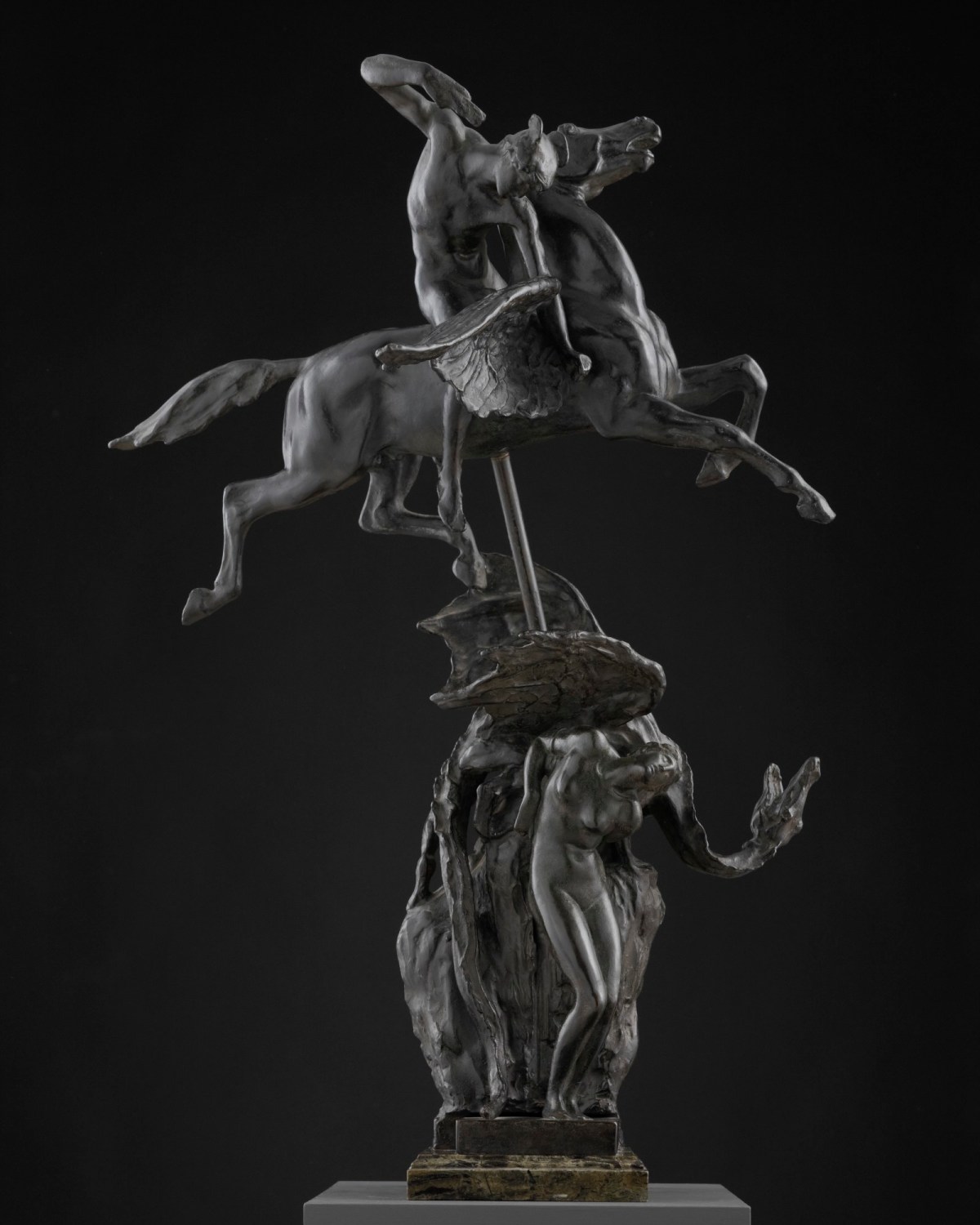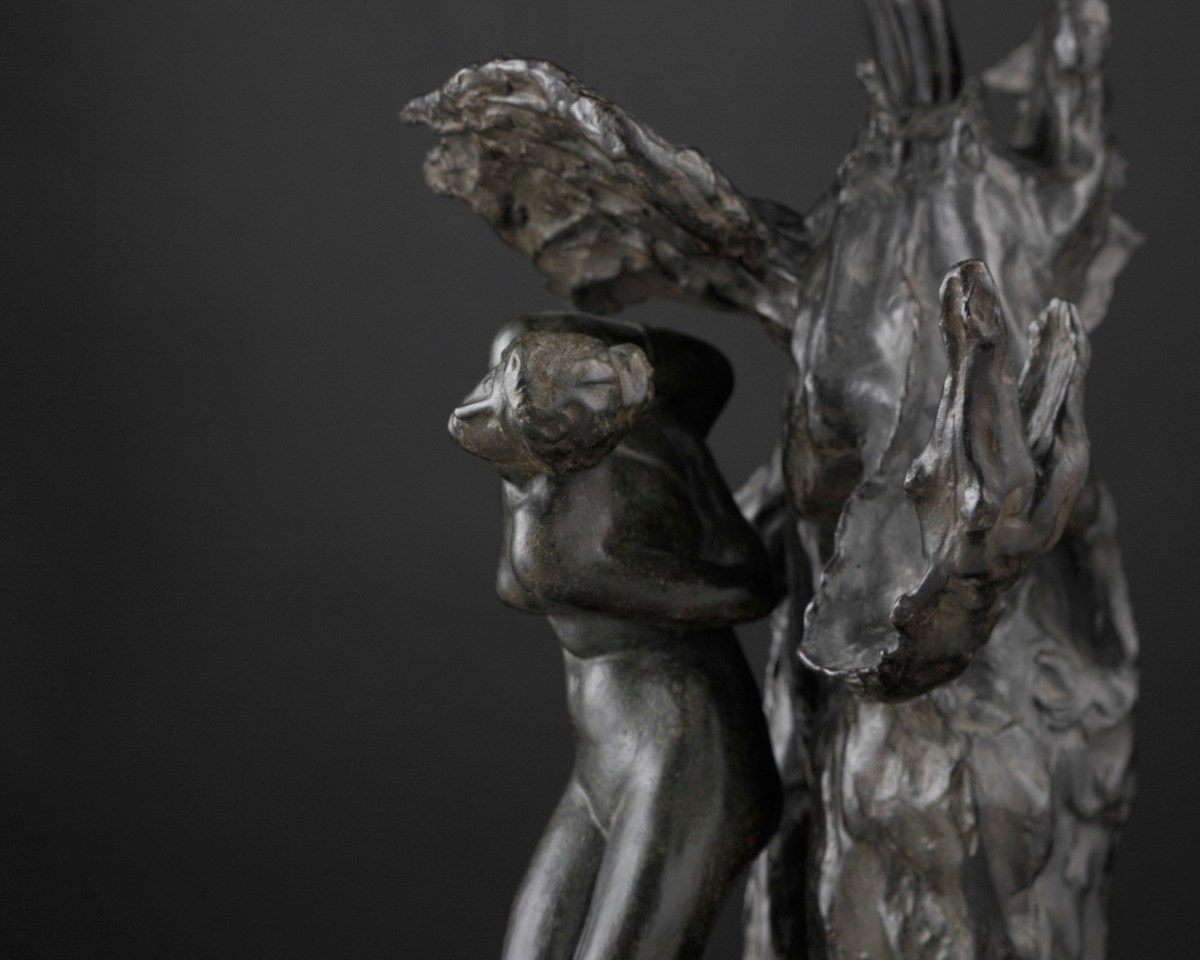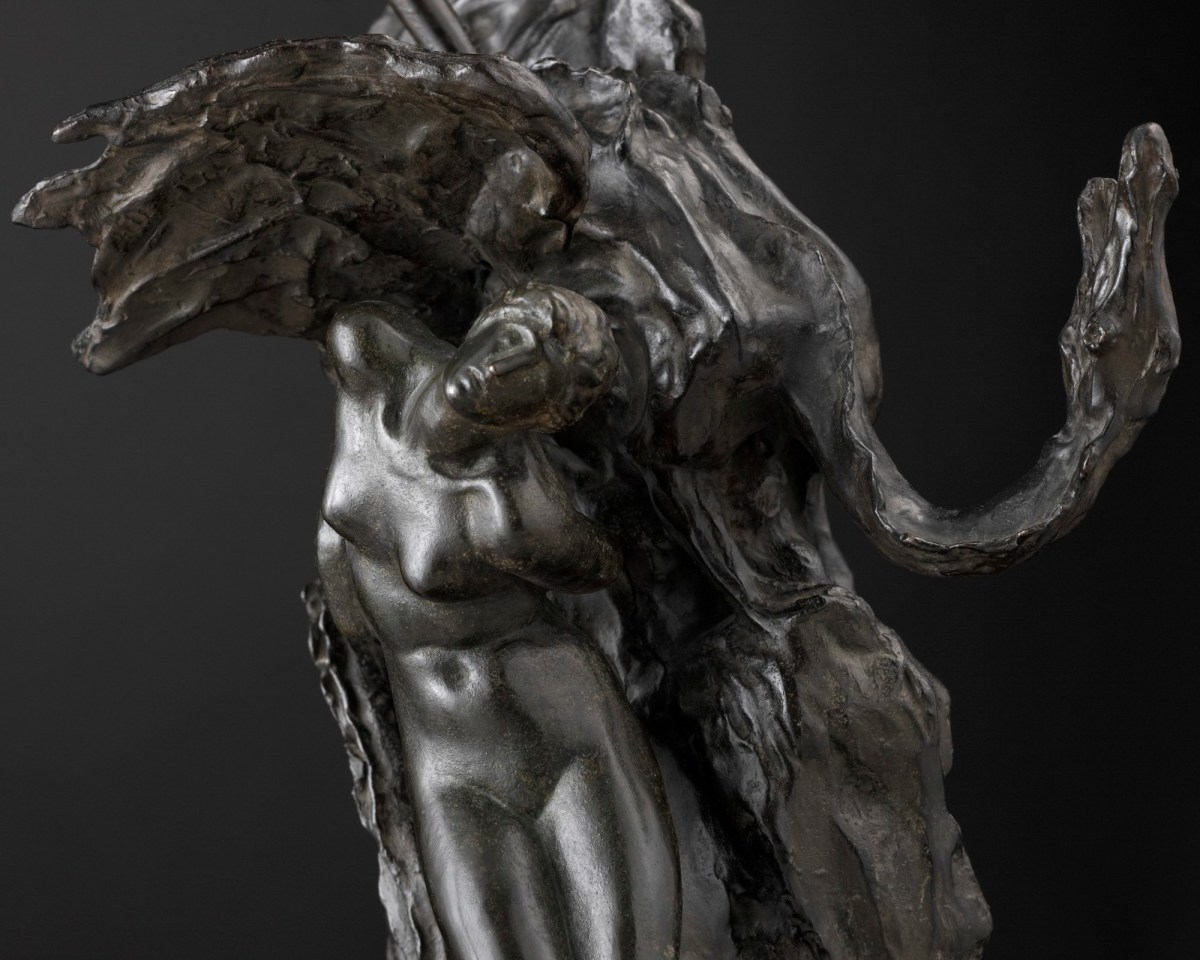
Lord Leighton PRA, Sketch model of Perseus, Pegasus and Andromeda for 'Perseus and Andromeda', ca.1896 (after a plaster dated ca.1890).
Bronze. 753 mm x 610 mm x 470 mm, Weight: 30 kg. © Photo: Royal Academy of Arts, London. Photographer: Paul Highnam.
This image is not available to download. To licence this image for commercial purposes, contact our Picture Library at picturelibrary@royalacademy.org.uk

Lord Leighton PRA, Sketch model of Perseus, Pegasus and Andromeda for 'Perseus and Andromeda', ca.1896 (after a plaster dated ca.1890).
Bronze. 753 mm x 610 mm x 470 mm, Weight: 30 kg. © Photo: Royal Academy of Arts, London. Photographer: Paul Highnam.
This image is not available to download. To licence this image for commercial purposes, contact our Picture Library at picturelibrary@royalacademy.org.uk

Lord Leighton PRA, Sketch model of Perseus, Pegasus and Andromeda for 'Perseus and Andromeda', ca.1896 (after a plaster dated ca.1890).
Bronze. 753 mm x 610 mm x 470 mm, Weight: 30 kg. © Photo: Royal Academy of Arts, London. Photographer: Paul Highnam.
This image is not available to download. To licence this image for commercial purposes, contact our Picture Library at picturelibrary@royalacademy.org.uk

Lord Leighton PRA, Sketch model of Perseus, Pegasus and Andromeda for 'Perseus and Andromeda', ca.1896 (after a plaster dated ca.1890).
Bronze. 753 mm x 610 mm x 470 mm, Weight: 30 kg. © Photo: Royal Academy of Arts, London. Photographer: Paul Highnam.
This image is not available to download. To licence this image for commercial purposes, contact our Picture Library at picturelibrary@royalacademy.org.uk

Lord Leighton PRA, Sketch model of Perseus, Pegasus and Andromeda for 'Perseus and Andromeda', ca.1896 (after a plaster dated ca.1890).
Bronze. 753 mm x 610 mm x 470 mm, Weight: 30 kg. © Photo: Royal Academy of Arts, London. Photographer: Paul Highnam.
This image is not available to download. To licence this image for commercial purposes, contact our Picture Library at picturelibrary@royalacademy.org.uk
Sketch model of Perseus, Pegasus and Andromeda for 'Perseus and Andromeda', ca.1896 (after a plaster dated ca.1890)
Lord Leighton PRA (1830 - 1896)
RA Collection: Art
On free display in Collection Gallery
The Greek hero Perseus swoops down on his winged horse Pegasus to rescue Andromeda from the clutches of a sea monster.
In Greek legend, Queen Cassiopeia angered the sea god Poseidon by claiming that she (or in some versions her daughter Andromeda) was more beautiful than the Nereids (sea nymphs). As punishment, Poseidon sent a sea monster to attack her land, a disaster which could only be avoided by chaining Andromeda to a rock in the sea as a sacrifice. While chained there, Andromeda was seen by Perseus on his winged horse. Perseus came to Andromeda’s rescue by slaying the monster.
This bronze sketch model was cast from three plaster studies of Andromeda, the Dragon and Perseus on his horse Pegasus, all of which date from about 1890. The three-dimensional studies were used by Leighton for two paintings, Perseus and Andromeda and Perseus on Pegasus hastening to the Rescue of Andromeda. Leighton used his small plaster models to test out his ideas and compositions for paintings, moving them around and dressing the figures with cloth to study the way the fabric fell.
The influence of Michelangelo on Leighton’s later works is evident in the figure of Andromeda, whose pose recalls Michelangelo’s Slave in the Louvre, and the figures in his drawing The Fall of Phaeton. The figure of Christ in Michelangelo’s Last Judgement, meanwhile, may have influenced the Leighton’s representation of Perseus.
The proximity of the figures in this sculpture is far removed from either of Leighton’s paintings, in both of which Perseus flies high above the monster. In the catalogue for a recent exhibition in which the sketch model was shown it was remarked that it showed ‘Victorian gender roles taken to extremes’ (Fröhlich, p.128).
Further reading
Fabian Fröhlich, ‘The Perseus Series’, in Christofer Conrad, Annabel Zettel et al, Edward Burne-Jones: The Earthly Paradise, exh. cat., Staatsgalerie Stuttgart and Kunstmuseum Bern, 2009, pp.103-136
Object details
753 mm x 610 mm x 470 mm, Weight: 30 kg
Associated works of art
3 results
-
![Lord Leighton PRA, Sketch model of Perseus and Pegasus for the painting 'Perseus and Andromeda']()
Lord Leighton PRA
Sketch model of Perseus and Pegasus for the painting 'Perseus and Andromeda', ca. 1890
Plaster
-
![Lord Leighton PRA, Sketch model for the Dragon in the painting 'Perseus and Andromeda']()
Lord Leighton PRA
Sketch model for the Dragon in the painting 'Perseus and Andromeda', ca.1890
Plaster
-
![Lord Leighton PRA, Sketch model for the figure of Andromeda in 'Perseus and Andromeda']()
Lord Leighton PRA
Sketch model for the figure of Andromeda in 'Perseus and Andromeda', ca. 1890
Plaster with bronze coloured paint
Start exploring the RA Collection
- Explore art works, paint-smeared palettes, scribbled letters and more...
- Artists and architects have run the RA for 250 years.
Our Collection is a record of them.






